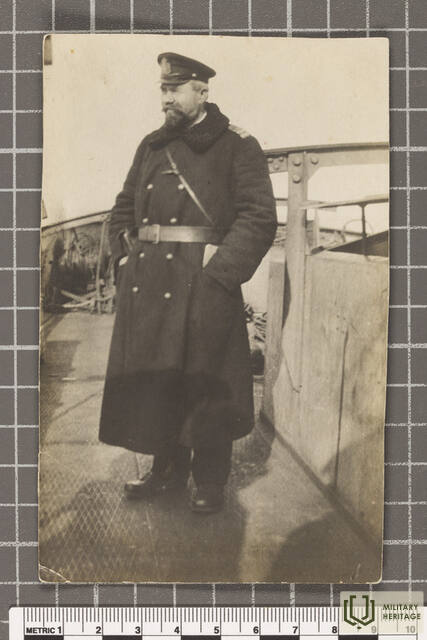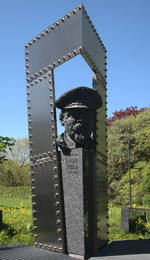Johan Pitka (1872 to autumn 1944)
I Wars of Independence, II WW2
Estonian naval officer and politician, one of the founders of the Republic of Estonia and among the most legendary military commanders of the War of Independence. He was one of the founders of the Estonian Naval Forces, the Defence League and the Border Guard and he adopted the use of armoured trains and cars in the War of Independence. Cross of Liberty 1st Class 1st Rank recipient.
Pitka was born on 19 February 1872 in Järva County. He attended the naval academies in Käsmu, Kuressaare and Paldiski and obtained his master mariner qualification in 1895. He actively contributed to the formation of Estonian national military units from in 1917. Pitka was a member of the Main Committee of Estonian Servicemen and was sentenced to death behind his back by Bolshevists for this. He organised the Home Guard of Tallinn from September 1917, which later grew to become the Defence League. He led the formation of the naval forces and armoured train units at the start of the War of Independence. In December 1918, he was appointed Commander-in-Chief of the Naval Forces of the Republic of Estonia, he led all the Estonian naval operations during the War of Independence and was promoted to the rank of Counter Admiral in 1919. He left active service in November 1919.
Pitka then went into politics and was active in the business world, he lived in Canada from 1924 to 1930. After returning to Estonia, he joined the War of Independence Veterans' Movement. After Estonia fell under the control of the Soviet regime, Pitka fled to Finland in August 1940.
In spring 1944, he returned to his homeland and attempted to organise a national armed resistance to defend Estonia from the invading Red Army. In August, with permission from the Germans, he formed a battalion-sized strike team called Admiral Pitka, which was not subject to German military command. The ‘Pitka boys’ fought against the Red Army in the counties of Harju and Lääne after the German retreat from Estonia. In September 1944, Pitka went missing in action; the circumstances of his death and his burial site are unknown to this day.
Johan Pitka was married to Helene Neuhaus. Four sons and two daughters reached adulthood. John died in a car accident in 1923, Oliver-Edward and Stanley were executed in the concentration camp in Solikamsk, August-Andreas in Butyrka prison in Russia. Helene and her daughters fled to Canada.
Related objects
Memorial to Johan Pitka
This memorial to Johan Pitka is situated on Wismari Street in Tallinn. Depicting the bronze head of the admiral as fashioned by sculptor Tõnu Maarand, it was unveiled on 19 February 2002 with President Lennart Meri and Mayor of Tallinn Edgar Savisaar attending. The blackened steel wedge resembling a ship's bow designed by architect Mart Kadarik was added later. As Kadarik has since pointed out, the wedge faces eastwards, symbolising where the main efforts made by Estonia's defenders are directed. Beneath the statue lies a triangular welded grill surface symbolic of a ship's deck. Below the grill, blue lights illuminate the monument, signifying Pitka's close relationship to the sea and to the protection of Estonia’s maritime borders.







